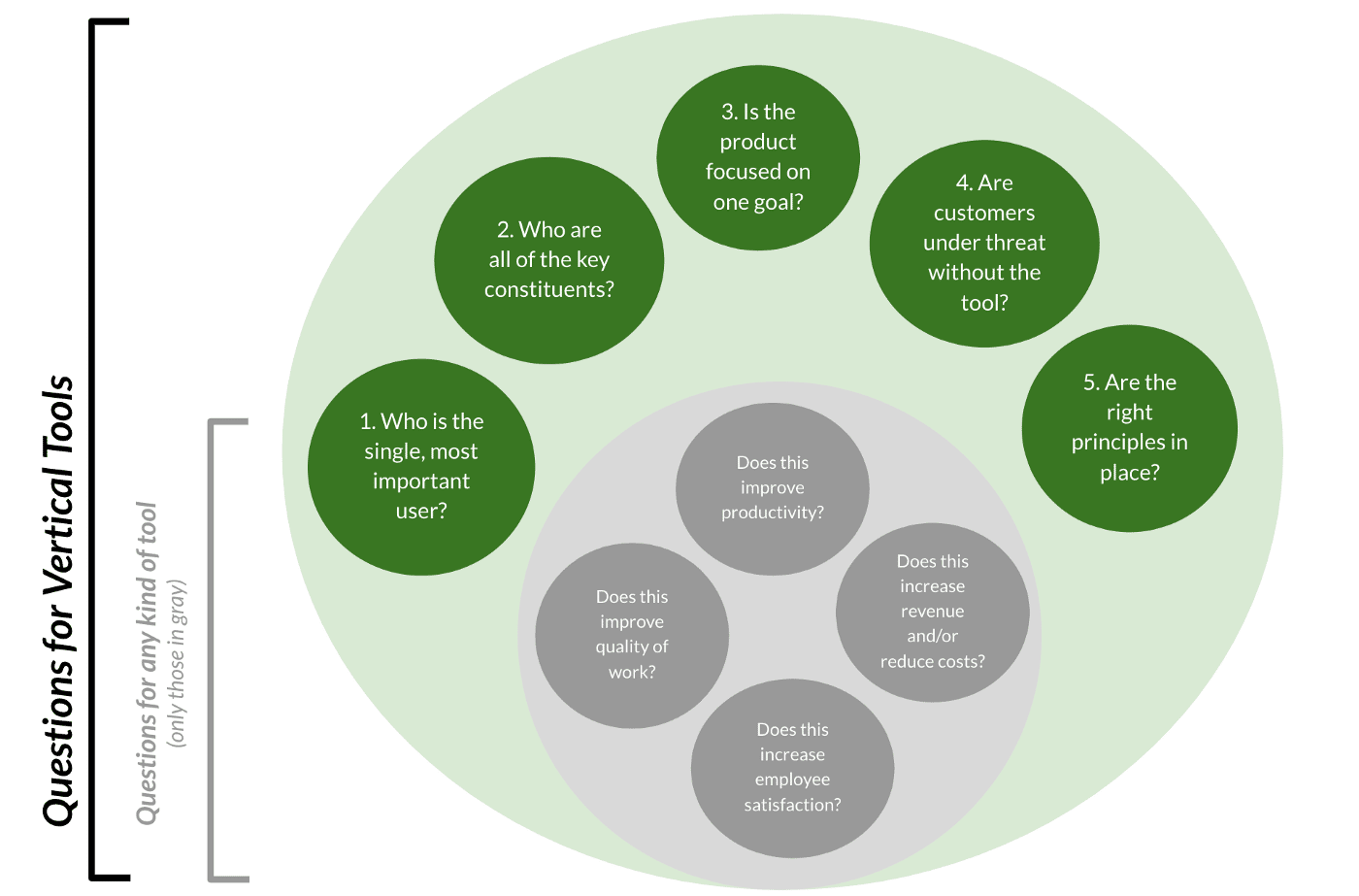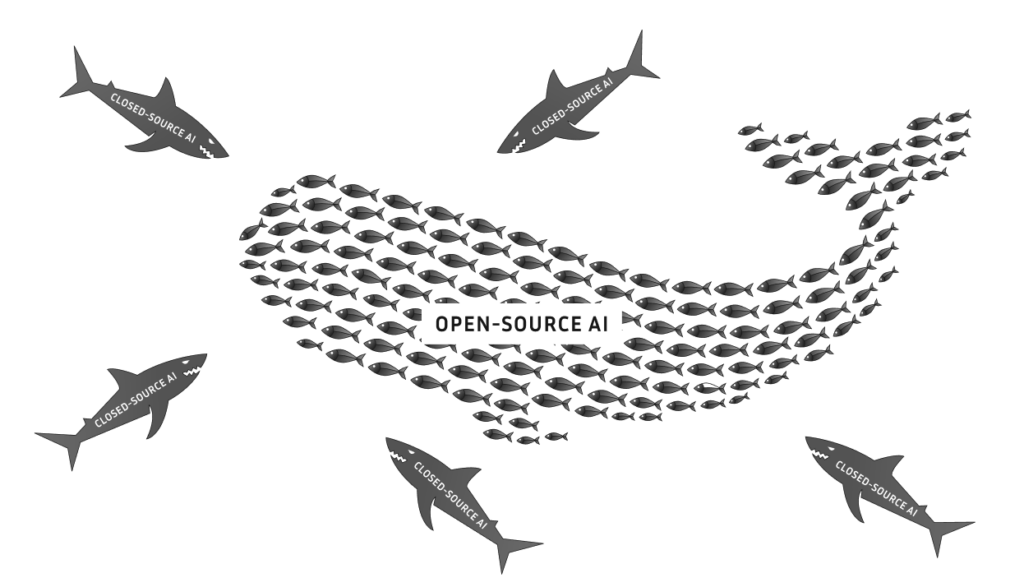Productivity Tools Go Vertical
Five questions for entrepreneurs to consider before diving in
Obvious |

For the past five years I’ve been a product manager at FiscalNote, Uber, and Dropbox. In that short time, I witnessed a dramatic transition in productivity tools that our teams used. Tools like Slack, Figma, Zoom, Notion, and Superhuman helped us to communicate, collaborate, and get more done, more quickly. When we couldn’t find the right tool, we built it ourselves.
It is clear that many of these tools share a common origin, popularized through a similar playbook. Most were beta tested and launched within tech companies, many of which share similar problems and use one another’s products. These tools would spread within the tech/startup world first, and then to other industries and the Fortune 500.
For the tech industry, by the tech industry, and eventually everyone else.
Having recently joined Obvious Ventures, I’ve been exposed to more (and much larger) sectors stretching far outside the technology industry. I quickly formed an insight that “tech-first” tools are great for horizontal functions that most companies share, such as task management, customer relationship tracking, and email, but they don’t address many large, underserved vertical markets and industries.
At Obvious we’re setting our sights beyond the horizontal productivity tools and onto the new frontier of industry-specific verticals. How can we improve modern work in finance, healthcare, and manufacturing? Or pathology, construction, and aquaculture? Pharmaceuticals, shipping, and retail? Knowledge workers in other industries do in fact have dramatically different workflows, work styles, team profiles, and fundamental business challenges.
There is a new set of companies building digital solutions for traditionally non-digitized industries — and a playbook is emerging for how these entrepreneurs are making it happen.
A Brief Guide To Going Vertical
How, then, might entrepreneurs today consider building modern, vertical productivity tools? Simply put, we believe the most effective approach is to take the best practices from tech-centric product development combined with a radical empathy to better understand nuances of other industries.
Over the years, I have both built and used all manner of these tools. I’ve been trained to consider multiple questions when evaluating them, which can apply broadly to practically any industry (shown in gray). When we shift our focus to uncover vertical work opportunities, however, there are additional questions to reflect on (shown in green):

At the risk of redundancy, it’s essential that new entrants deeply understand—through first-hand, qualitative, and quantitative approaches—the bespoke challenges their chosen industries are facing. Only then will the needs and opportunities unique to that industry begin to reveal themselves. Here are five questions to help guide the exploration:
- Who is the single, most important user? There is nothing more important than understanding unmet (and often unstated) needs of your core customer. Only then can you design and build real solutions. For example, Incredible Health co-founders Rome Portlock (from a family of nurses) and Iman Abuzeid (from a family of doctors) had a shared experience helping shape their understanding of the problem: nurses needed a dramatically better way to find great work, and hospitals needed an equally better way to reduce time-to-hire and fill permanent positions.
- Who are all of the key constituents? A great exercise is to map out all stakeholders to a product or dependency and speak with them to understand what’s important to them. In the case of Incredible Health, this included not only nurses and hospital administrators, but also talent acquisition / HR specialists and Chief Nursing Officers.
- Is the product focused on one goal? One example is Inato, a platform solving one core problem: the manual and cumbersome nature of site selection for clinical trials. Eventually, they could solve other problems and expand vertically. But for now, focusing on one problem at a time is vital, especially in entrenched, hard-to-penetrate industries.
- Are customers under threat without the tool? The best way to make verticalized tools is by making it so sticky and ingrained in the customer that their business cannot operate if taken away. The tool then becomes a must-have vs. a nice-to-have. Generally, this goes hand-in-hand with question 1., since a sticky product often solves for a core user need.
- Are the right principles in place? For example, “agility” as a product feature may be less appealing to highly complex, regulated industries with much higher stakes. It’s not easy to just “break things”, and the incumbents are too complex to be “disrupted”. What are the underlying principles that makes this particular industry move, and may set the conditions for the success or failure of a tool?
Analog Problems, Digital Solutions
There is a new wave of companies leveraging the approaches mentioned above to build venture-scale, vertical work solutions for largely analog industries. Below are a few examples of solutions worth noting:
Process Automation
It’s possible to kill less time. Paper-based communication methods are difficult to love: not only do they kill trees, but they’re the backbone of unscalable, unreliable, and slow messaging channels. FiscalNote helps government affairs professionals and lobbyists avoid the need to track and analyze legislative activities on pen and paper, while Qualia helps title and escrow agents run their entire workflow online. Lastly, Inato is a growing “CRM” tool for clinical trial site selection, an otherwise cumbersome, cold-calling, overflowing-with-paper industry.
Custom Collaboration
Bringing a disparate group of people together to get work done. Many non-digitized industries have bureaucratic, challenging systems that unintentionally stifle productivity—like real estate development, as one example. Plangrid (now owned by Autodesk) helps architects design blueprints digitally, while BuildingConnected (also owned by Autodesk) helps contractors track and qualify bid opportunities for projects. All of this ultimately helps workers move on to construction projects faster. In another massive industry, global shipping, Flexport now helps operators manage and track freight logistics online, allowing operators unparalleled visibility, control, and consistency (you’d think this would have existed already, but alas, it hadn’t).
Hiring and Staffing
Finding and supporting talent should be frictionless. Many industries don’t have dedicated tools that meet their talent needs, let alone support what they have. Incredible Health (an Obvious portfolio company), mentioned above, makes it easy for hospitals to find long-term employment options for nurses (short-term staffing, which is pervasive, is expensive and painful for both hospital systems and nurses). Relatedly, Catch is building a benefits/tax withholding platform for gig workers (e.g. freelancers, 1099 contractors) so they can have the same level of benefits as full-time employees.
Augmenting Work
We can turn humans into superhumans. Heavily manual and repetitive work on existing digital workflows can now be mitigated by machine vision and automation, allowing those workers to do far more important tasks. In healthcare, Sirona Medical, Path.ai, and Viz.ai are all leveraging AI and machine vision to automate annotation and labeling of MRI/CT images so that radiologists and pathologists can diagnose potentially life-threatening diseases faster. In accounting, Pilot has helped take out the burden of processing hundreds of complex tax inputs into a single step so that CPAs can process statements for clients at scale (Visor, another Obvious portfolio company, does this directly for consumers). These solutions are dramatically improving upon decades-long methods, aligning them more closely with modern workflows.
There are many more industries where organizations have either no solutions or are only beginning to adopt emerging tools. As startups in productivity explore new problems in frontier-yet-familiar terrain, it’s essential to be mindful of the similarities and differences between general tech and bespoke industry verticals. Only with a combination of shared learnings and domain-expertise can entrepreneurs effectively build meaningful businesses within legacy sectors.
We are on the hunt for these new technologies, and if you’re developing products that help solve real problems in non-digitized industries, don’t hesitate to reach out.



